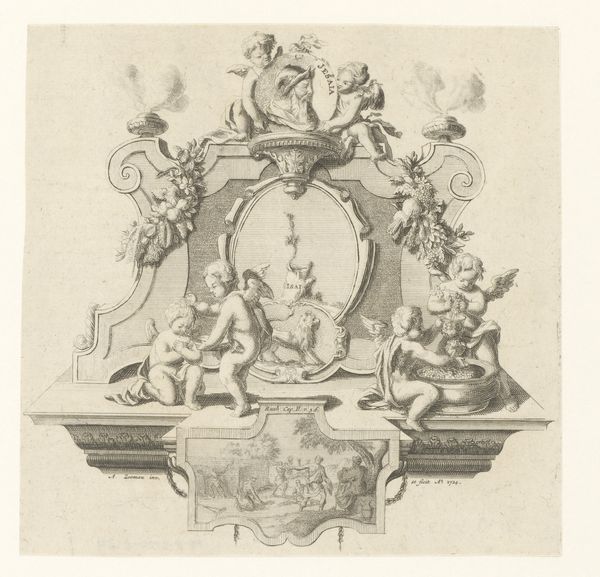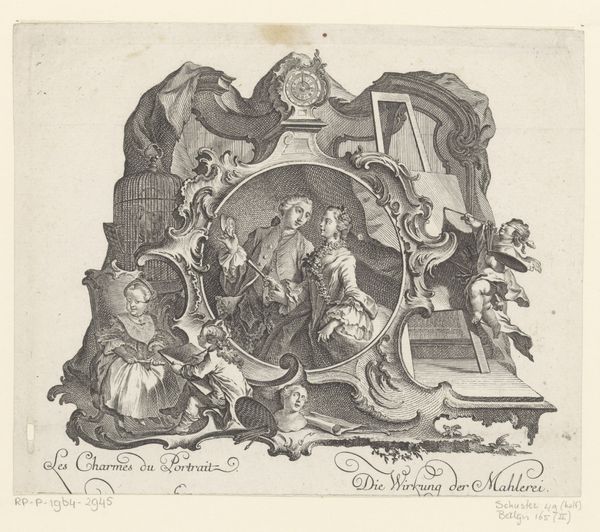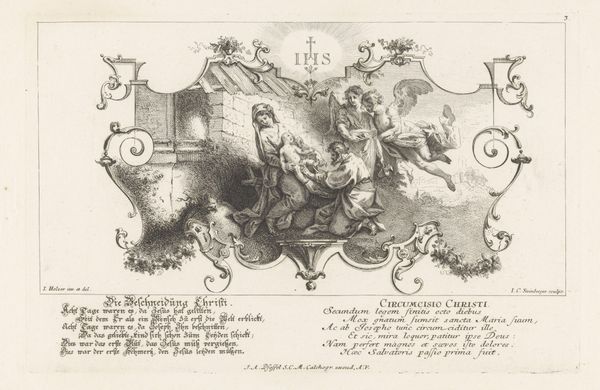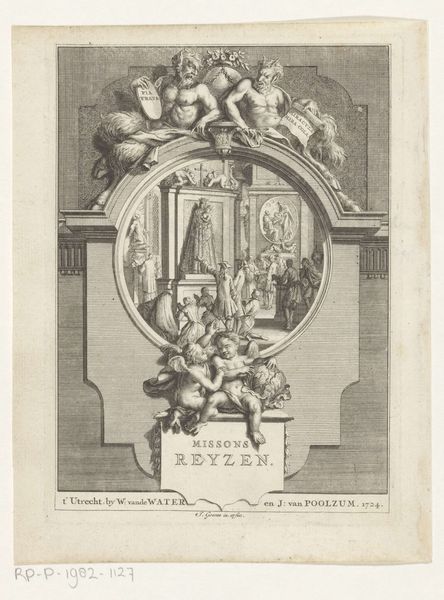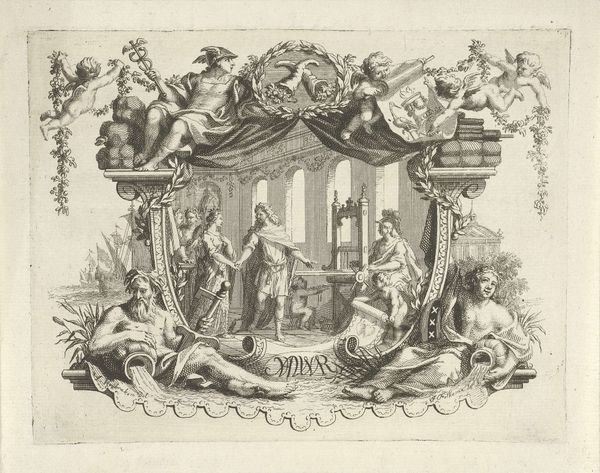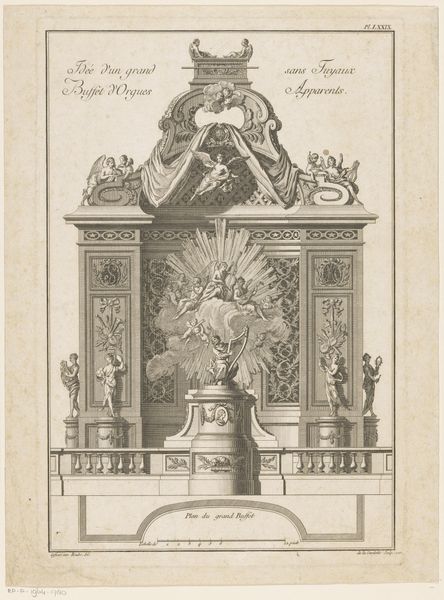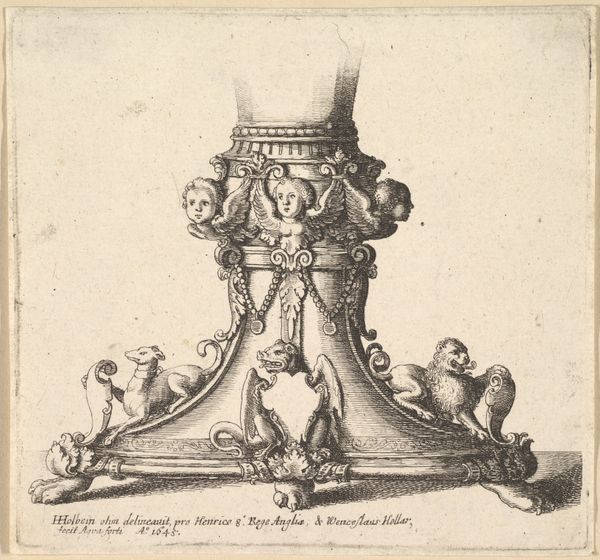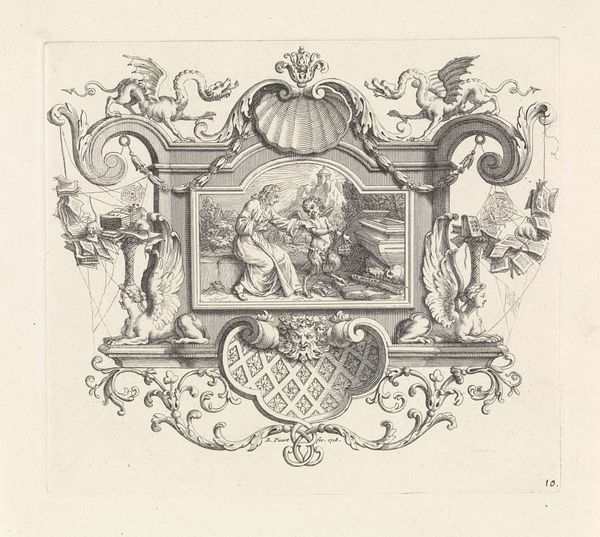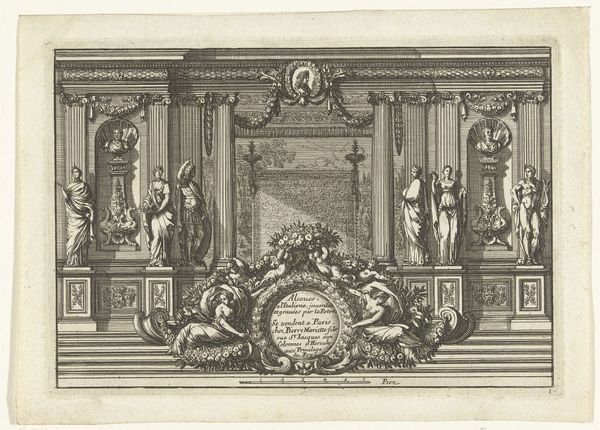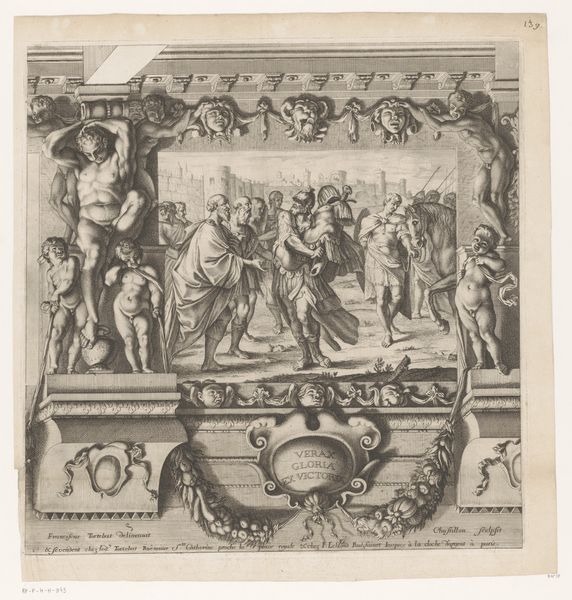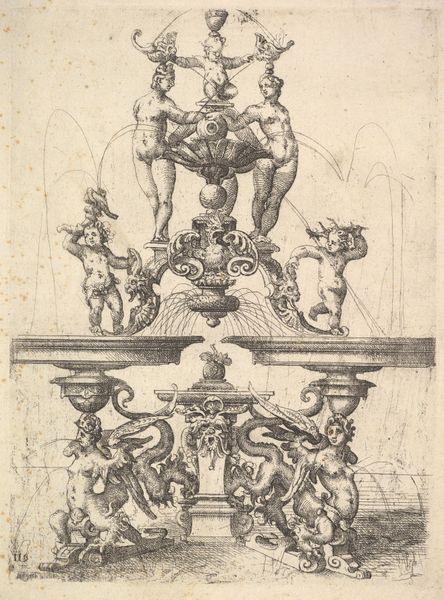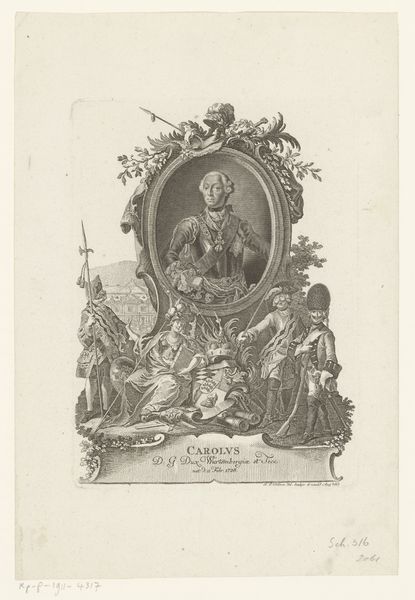
print, metal, engraving
#
baroque
# print
#
metal
#
figuration
#
cityscape
#
history-painting
#
engraving
Dimensions: height 338 mm, width 484 mm
Copyright: Rijks Museum: Open Domain
This print, Neptunusfontein in Neurenberg, was made by Michael Rössler, probably in the mid-18th century, and depicts a proposed public fountain for the city. But this image also speaks to the role of art within a specific cultural and institutional context. The fountain itself, crowned by the figure of Neptune, is a statement of civic pride, associating Nuremberg with classical grandeur. The very act of creating and circulating this print suggests a desire to shape public opinion, to promote a vision of the city as a patron of the arts. Consider the context: Nuremberg, a city with a rich history of craftsmanship, sought to assert its cultural importance. The image isn't merely a representation; it's a proposal, a piece of rhetoric aimed at securing support for the actual construction. Understanding the social forces at play here requires us to look beyond the image itself. Archival documents, city records, and studies of patronage help us understand the civic aspirations and power dynamics embedded in this print. Art is always part of a conversation, and the historian's role is to reconstruct that conversation.
Comments
No comments
Be the first to comment and join the conversation on the ultimate creative platform.
